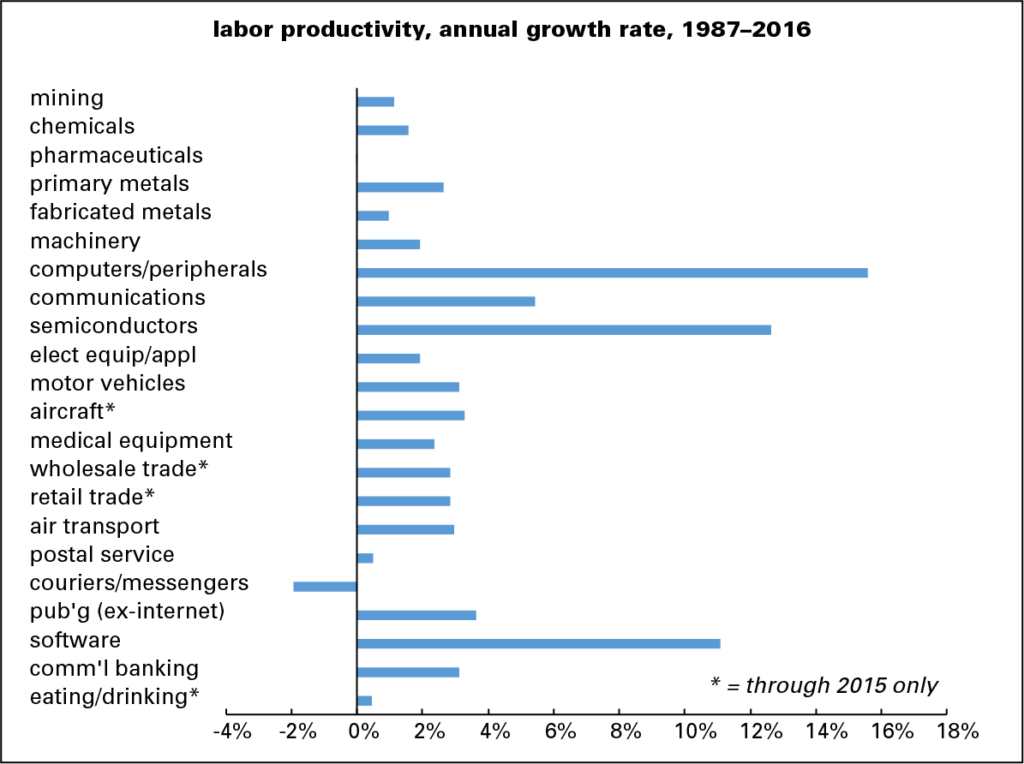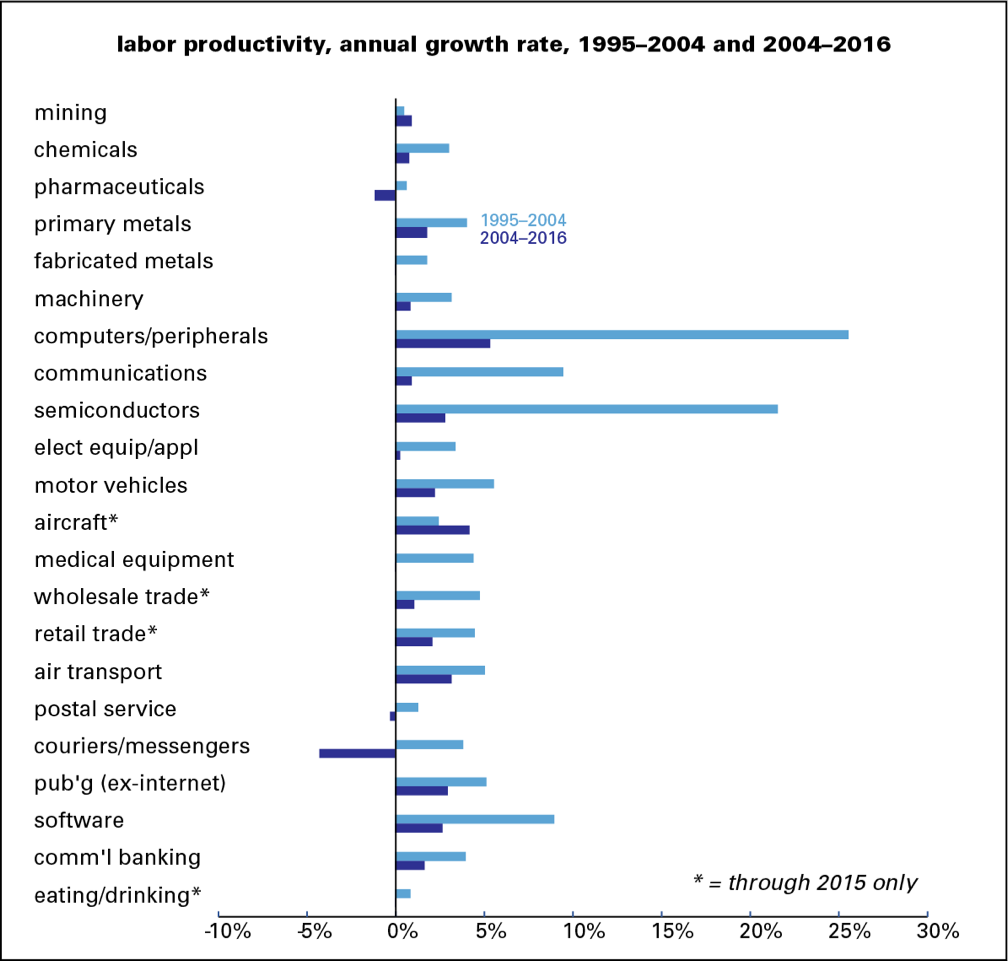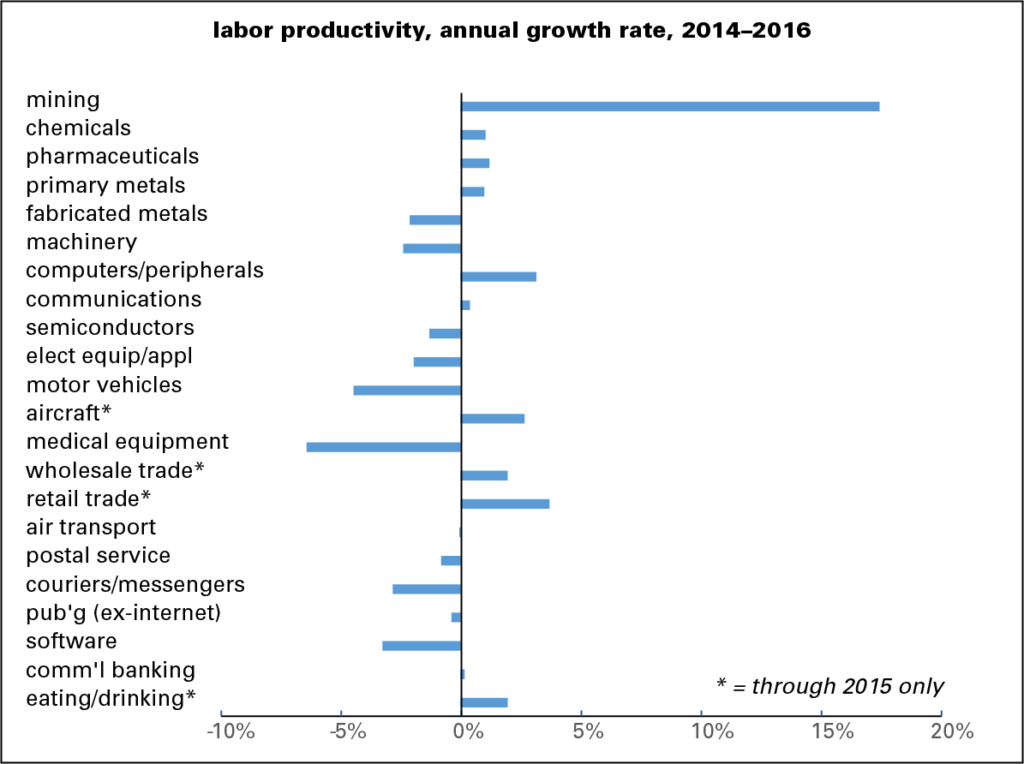Productivity is one of our obsessions, and it should be a national obsession as well.* Clearly it isn’t. The industry statistics presented here show that for a lot of industries, the last couple of years have been a real bust.
The stats, provided by the Bureau of Labor Statistics, cover scores of industries, with the manufacturing sub-sectors particularly finely broken down. Here we’ve provided what is fashionably described in some circles as a “curated” list of industries, since the whole set is beyond our scope.
First the long sweep, from 1987 (when this series begins) through 2016, graphed below. (The 2016 data isn’t available for all industries; those for which 2015 is the terminal year are marked with an asterisk in all three graphs.) The standouts are, not surprisingly, in high-tech: computers, semiconductors, and software, all with annual gains in the double digits. Some old-line industries, like motor vehicles, aircraft, and wholesale and retail trade, turned in solid performances.
Eating and drinking establishments and, perhaps surprisingly, pharmaceuticals did quite poorly, with pharma slightly in the red—an amazing, if invisible on the graph, feat for such a technology-rich enterprise. And perhaps even more surprisingly, the postal service did better than private couriers and messengers, where productivity declined over the almost three-decade interval.
But as the graph below shows, most of the stellar performances were logged during the productivity acceleration of the late 1990s and early 2000s. Of the 22 industries shown, 20 saw a decline between that period and the last twelve years—a decline of over 4 percentage points on average. Only mining and aircraft showed a pickup. Computers and semiconductors fell by around 20 percentage points. Pharmaceuticals went from positive to negative.
And the last couple of years have been fairly terrible. Half the industries showed a decline in productivity. Only mining—fracking, one assumes—had a strong performance. Computers remained in the black, but semiconductors fell below zero. Motor vehicles and medical equipment were firmly negative.
The productivity slowdown that we’ve been following at a high level is a pervasive problem at the industry level.
* For those of you not so obsessed, productivity determines our standard of living. An increase in productivity means greater output from the same input, which makes labor more valuable, which in turn lifts wages. Too many corporations are currently using their profits, and money borrowed on the cheap, to buy back their own stock and pay dividends to their investors instead of investing in productivity enhancing research & development, and physical capital. That’s one of the big factors in sluggish wage growth.






